Damian Norman, is the Director of Immersive Events at the ExCeL in the Royal Docks, London.
Learn more about your ad choices. Visit megaphone.fm/adchoices
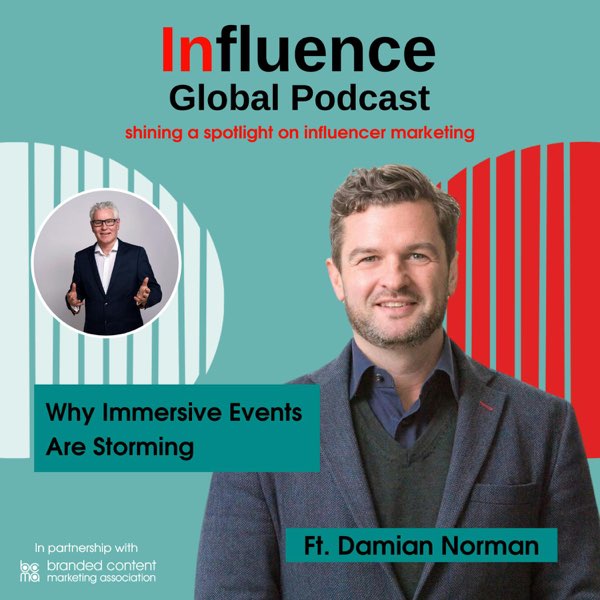
Damian Norman, is the Director of Immersive Events at the ExCeL in the Royal Docks, London.
Learn more about your ad choices. Visit megaphone.fm/adchoices


Influencer Speaker
Finding the right influencer speaker for your event can make all the difference. Whether you’re hosting a marketing summit, corporate gathering, or industry conference, you need someone who can captivate your audience while delivering valuable, actionable insights. If you’re searching for the perfect speaker, look no further than Gordon Glenister.
Gordon Glenister isn’t just a speaker—he is a leading authority in influencer marketing, a global podcast host, and an influencer himself. His dynamic presence, deep industry knowledge, and ability to engage audiences make him the ideal choice for your next event. Here’s why:
1. A Thought Leader in Influencer Marketing
Gordon Glenister is an influencer marketing expert with years of experience working with brands, agencies, and content creators. As the author of "Influencer Marketing Strategy", he has a profound understanding of the industry and regularly advises businesses on the latest trends and best practices.
2. Host of the Global Influence Podcast
One of the most distinguishing factors of Gordon Glenister is his Global Influence Podcast, where he interviews top influencers, industry leaders, and marketing professionals. His podcast reaches thousands of listeners worldwide, positioning him as a go-to expert in the field of influence and personal branding.
3. Access to Over 100 Million Influencers
Through his cutting-edge tech solution, Gordon has direct access to over 100 million influencers across different platforms and industries. This gives him unique insights into influencer trends, campaign successes, and the power of influence across various sectors. If you want a speaker with unparalleled industry access and knowledge, Gordon is your best bet.
4. VIP Executive Influence Program
Beyond just speaking, Gordon runs an exclusive VIP Executive Influence Program designed to help leaders become key persons of influence in their respective industries. His expertise in building personal brands and establishing thought leadership makes him an ideal guide for executives looking to expand their reach and credibility.
5. A Proven Track Record with Over 300 Events
Gordon has spoken at over 300 events in the past few years, wowing audiences with his energy, storytelling, and deep industry knowledge. He knows how to engage crowds, keep them excited, and leave them inspired with actionable strategies they can use to redefine their influence.
Gordon delivers impactful keynote speeches on a range of topics, including:
• How to Build and Monetize Your Personal Brand
• The Future of Influencer Marketing and Emerging Trends
• Leveraging Influence for Business Growth and Thought Leadership
• How to Identify and Work with the Right Influencers
• The Secrets Behind High-Impact Influencer Campaigns
If you’re looking for an influencer speaker who can truly inspire, educate, and energize your audience, Gordon Glenister is the speaker you need. His unmatched industry insights, global network, and personal experience as an influencer make him an exceptional choice for any event.
Don’t settle for an average speaker—choose Gordon Glenister, the influencer marketing expert who will leave your audience buzzing with excitement and armed with powerful strategies to amplify their influence.
Book Gordon Glenister today and take your event to the next level!
About the Author:
Gordon Glenister is an international expert on influencer marketing and membership. As 11 years at the helm of leading trade association, he has been instrumental in the setting up of the influencer channel of the Branded Content Marketing Association and also the Meetings and Events Support Association.
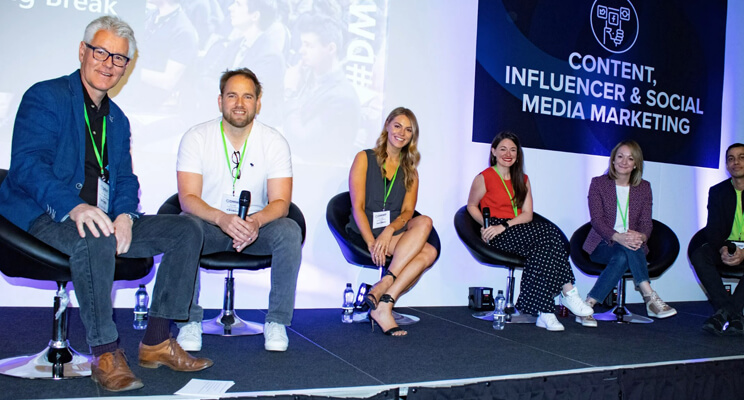
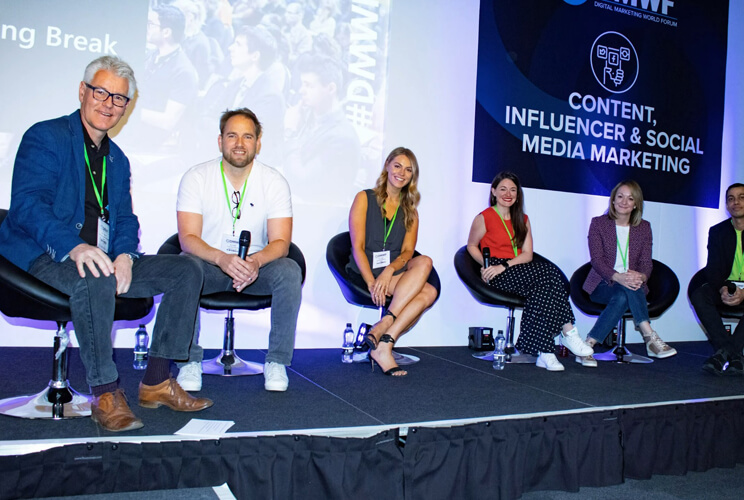
Influencer Panellist
When planning a conference, having the right speakers and panellists can make all the difference. One of the best ways to ensure an engaging and insightful discussion is by including an influencer panellist in your program. Influencers bring a unique perspective, real-world experience, and an engaged following that can amplify your event's impact. Whether they specialize in B2B or B2C industries, influencers have built their reputations on trust, authority, and engagement—key attributes that make them exceptional panellists.
Influencers come from all industry disciplines and age backgrounds, making them highly versatile additions to any conference. Whether you’re looking for an expert in technology, finance, fashion, or sustainability, there is an influencer who can provide valuable insights and trends relevant to your audience. Here’s why having an influencer panellist should be a priority for your event:
1. They Bring Industry Authority and Credibility
Influencers are often seen as trusted thought leaders within their niche. They have spent years cultivating credibility, sharing insights, and building a loyal audience. Their ability to influence decisions, shape trends, and provide real-world expertise makes them a valuable asset to any panel discussion.
2. They Create High Audience Engagement
An influencer panellist doesn’t just speak—they engage. They know how to communicate in a way that resonates with audiences, often simplifying complex topics into digestible insights. Their presence can spark lively discussions, audience participation, and increased social media interactions, making your conference more dynamic.
3. They Offer Fresh Perspectives and Trend Insights
Unlike traditional speakers, influencers are constantly in touch with their communities. They understand current market trends, audience pain points, and emerging innovations. Having an influencer on your panel means gaining real-time, data-backed insights into what’s happening in the industry.

If you’re looking for a seasoned influencer panellist, Gordon Glenister is a top choice. Gordon has appeared in hundreds of influencer panels, sharing his expertise on influencer marketing trends and best practices. As the founder of the Branded Content Marketing Association’s Influence Division, he has played a pivotal role in shaping the industry.
Gordon has co-written numerous reports on best practices and is best known for his award-winning book, Influencer Marketing Strategy. His Influence Global Podcast, now with over 160 episodes, is a leading source of industry insights, featuring top experts and influencers worldwide. His deep understanding of influencer strategies, combined with his ability to moderate discussions and challenge perspectives, makes him an excellent choice for any conference panel.
Whether you’re hosting a marketing summit, business conference, or industry expo, including an influencer panellist ensures your event remains relevant, engaging, and insightful. Influencers bring credibility, audience engagement, and up-to-the-minute industry knowledge, making them essential voices in today’s conference landscape.
With Gordon Glenister’s expertise and network, you can access top-tier influencers to elevate your event. From panel discussions to thought-provoking debates, he ensures that your audience leaves with actionable takeaways and a fresh perspective on influence.
Want to make your conference unforgettable? Reach out to Gordon Glenister to secure an influencer panellist who will bring authority, insight, and audience engagement to your event. Don’t miss the opportunity to create a standout experience that attendees will talk about long after the event is over.
About the Author:
Gordon Glenister is an international expert on influencer marketing and membership. As 11 years at the helm of leading trade association, he has been instrumental in the setting up of the influencer channel of the Branded Content Marketing Association and also the Meetings and Events Support Association.


Keynote Influencer
In today’s fast-paced digital world, having a keynote influencer at your conference is no longer just an option—it’s a necessity. Influencers are shaping industries, driving conversations, and engaging audiences in ways that traditional speakers often cannot. If you want to make your event truly memorable, including a keynote influencer in your program is one of the best decisions you can make.
A keynote influencer brings a unique energy and credibility to your conference. Unlike traditional speakers, influencers have built trust with their audiences over time. They know how to communicate effectively, tell compelling stories, and create an authentic connection with attendees. Here’s why every conference should feature a keynote influencer:
1. Increased Audience Engagement
Influencers are experts at engaging audiences. Whether through storytelling, personal insights, or interactive discussions, they know how to keep attendees captivated. Their social media presence also allows them to generate pre-event excitement, ensuring strong attendance and participation.
2. Industry Authority and Credibility
A well-known keynote influencer brings instant credibility to your event. Attendees are more likely to trust insights from someone they already follow and admire. This adds immense value to your program, making it a must-attend event for industry professionals.
3. Expanding Your Event’s Reach
One of the biggest advantages of having an influencer at your event is their ability to amplify your conference through their social media channels. Their posts, live streams, and engagement with attendees can significantly increase your event’s visibility and reach, attracting a wider audience.
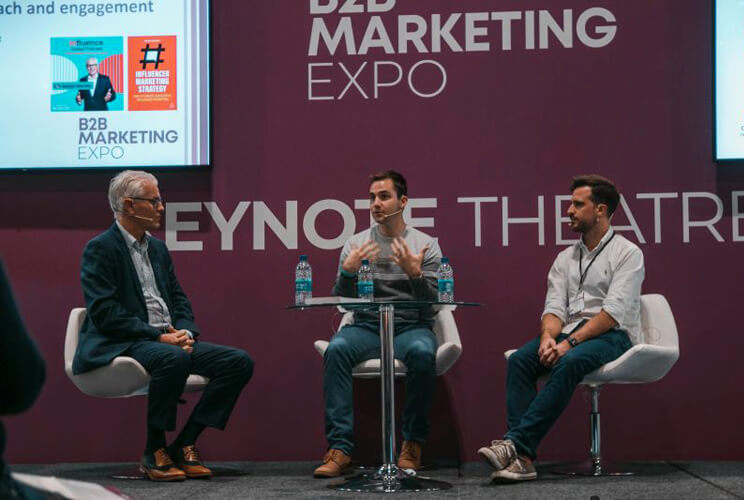
When it comes to choosing the right keynote influencer, Gordon Glenister is an ideal choice. As a leading authority in influencer marketing, a global podcast host, and an influencer himself, he knows how to inspire and educate audiences. Having spoken at over 300 events, Gordon has the expertise to deliver a compelling keynote that leaves attendees energized and motivated.
Beyond his own speaking prowess, Gordon has access to a vast network of influencers and industry leaders, meaning he can help bring the perfect speaker to your event. Whether you need a digital marketing expert, a personal branding specialist, or a thought leader in your industry, Gordon can connect you with the best.
In addition to being a fantastic keynote speaker, Gordon is also a renowned industry moderator. With a journalistic background, he has the ability to lead lively and insightful debates on stage. Whether he is guiding a panel discussion, challenging viewpoints, or ensuring an engaging Q&A session, his moderation skills add another layer of value to your event.
If you want your conference to stand out and provide real value to attendees, including a keynote influencer is the way to go. Influencers bring credibility, energy, and extended reach, ensuring your event is talked about long after it ends.
With Gordon Glenister’s expertise, connections, and dynamic presentation skills, your conference is guaranteed to be a success. Whether as a keynote speaker, moderator, or influencer curator, he can help bring your conference to life.
If you’re ready to take your conference to the next level, contact Gordon Glenister today. With his vast experience, industry authority, and network of influencers, he will help make your event truly unforgettable.
About the Author:
Gordon Glenister is an international expert on influencer marketing and membership. As 11 years at the helm of leading trade association, he has been instrumental in the setting up of the influencer channel of the Branded Content Marketing Association and also the Meetings and Events Support Association.


Influencer Marketing Speaker
In the ever-evolving world of digital marketing, influencer marketing has become a game-changer. Brands are constantly looking for ways to leverage influencers to build awareness, drive engagement, and increase sales. As a conference organiser, finding the right influencer marketing speaker is crucial to delivering value to your audience. If you want a speaker who is knowledgeable, engaging, and insightful, Gordon Glenister is the perfect choice.
Gordon Glenister is a renowned thought leader in influencer marketing with years of experience working with brands, agencies, and influencers. His expertise covers everything from developing successful influencer strategies to navigating the latest trends in the digital landscape. Here’s why he stands out as the best option for your next conference:
1. Deep Industry Expertise & Proven Track Record
Gordon Glenister is not just another speaker—he is a respected authority in influencer marketing, with extensive experience consulting brands on best practices. As the author of "Influencer Marketing Strategy", he provides actionable insights backed by research and real-world case studies. His deep understanding of influencer marketing trends, challenges, and opportunities makes him a highly sought-after speaker at global conferences and industry events.
2. Engaging & Actionable Presentations
Many speakers can talk about influencer marketing, but few can captivate an audience like Gordon Glenister. His presentations are packed with real-world examples, practical takeaways, and interactive discussions. Whether addressing small business owners or Fortune 500 executives, he tailors his talks to ensure attendees leave with actionable strategies they can implement immediately.
3. Understanding of Both Brands and Influencers
Unlike many speakers who focus solely on brand strategies, Gordon understands the entire ecosystem—brands, influencers, agencies, and consumers. This unique perspective allows him to provide valuable insights into how all stakeholders can benefit from effective influencer partnerships. His ability to bridge the gap between businesses and content creators makes him a versatile and dynamic influencer marketing speaker.
Gordon speaks on a variety of topics related to influencer marketing, including:
• How to Build a Winning Influencer Marketing Strategy
• The Future of Influencer Marketing: Trends to Watch
• Measuring ROI in Influencer Campaigns
• Brand-Influencer Relationships: Do’s and Don’ts
• How to Avoid Common Pitfalls in Influencer Marketing
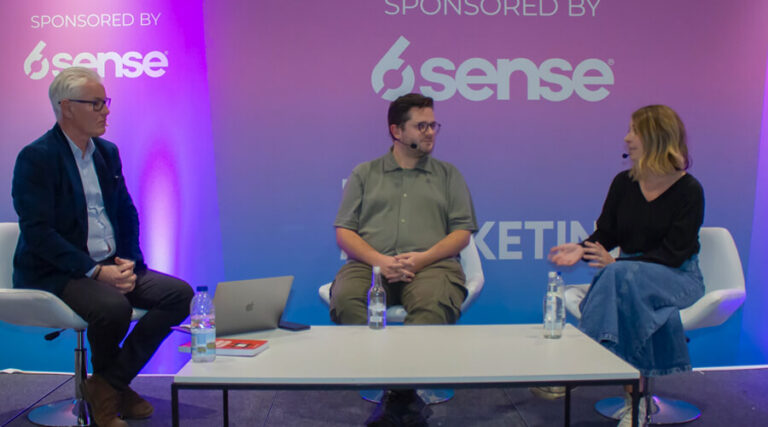
As a conference organiser, you want a speaker who will inspire, educate, and engage your audience. Gordon’s extensive experience in the industry, combined with his energetic speaking style, ensures that attendees stay engaged and leave feeling empowered. He has spoken at numerous industry events, and his sessions are always rated highly by attendees.
If you’re looking for a high-impact influencer marketing speaker who can deliver a powerful session filled with valuable insights, look no further than Gordon Glenister. Whether you’re hosting a corporate event, marketing summit, or industry conference, his expertise will elevate your event and provide attendees with the knowledge they need to succeed in the world of influencer marketing.
To book Gordon Glenister as a speaker for your next event, get in touch today and make your conference unforgettable!
About the Author:
Gordon Glenister is an international expert on influencer marketing and membership. As 11 years at the helm of leading trade association, he has been instrumental in the setting up of the influencer channel of the Branded Content Marketing Association and also the Meetings and Events Support Association.


What Benefits Should I Offer My Membership and Association Community? The Essential Checklist
Building and maintaining a successful membership community relies on one key principle: offering value. Members need to feel that their subscription or participation delivers tangible, meaningful benefits that enhance their personal or professional lives. To help you craft the perfect membership package, here is an essential checklist of benefits you should consider providing to your community. Each benefit can be tailored to your specific audience and their needs, ensuring maximum engagement and satisfaction.

1. Priority Booking (Seat Allocation)
Providing priority booking for events, workshops, or seminars ensures that your members feel valued and receive exclusive access. This is particularly valuable for communities that host high-demand events, where seats may be limited. Offering priority booking emphasizes exclusivity and makes your members feel special.
2. Newsletter and Magazine
Regular communication keeps your members informed and engaged. A well-curated newsletter and a high-quality magazine can provide industry insights, updates on upcoming events, and spotlight achievements within your community. These channels also allow you to highlight member success stories, strengthening the sense of belonging.
3. Supplier Discounts and Vouchers
One of the most appreciated benefits is access to discounts from suppliers and vouchers for key services. By negotiating exclusive deals for your members, you provide them with real savings, which can be a significant motivator for membership retention.
4. Employee Health Care and Well-being
For business-focused communities, offering access to employee healthcare schemes and wellness programs demonstrates a commitment to supporting members both professionally and personally. This is an increasingly popular benefit that adds real value to a membership package.
5. Specialised Helplines
Support is critical, and specialized helplines, such as those for HR, Export, and Health & Safety, can offer members expert advice when they need it most. These services are especially appealing to small businesses or professionals who may not have easy access to such expertise. Companies like Citation offer this service

6. Legal Advice
Legal guidance can be a costly but essential resource. Providing your members access to tailored legal advice, whether through consultations or resources, helps them navigate challenges and makes membership highly valuable.
7. Insurance Tailored to Your Sector
For members in specific industries, access to insurance that is uniquely tailored to their sector can be a huge draw. This benefit adds convenience, affordability, and peace of mind.
8. Room Hire at Association HQ
Access to physical space for meetings, events, or co-working can be a tangible and practical benefit. Offering discounted or free room hire at your association’s headquarters is a great way to bring members together and support their professional needs.
9. Member Referral Scheme
Encourage your members to bring others into the fold by offering rewards or discounts through a referral scheme. This not only grows your community but also creates a sense of shared ownership and loyalty among members.
10. Certification and Training
Providing opportunities for certification and training helps members stay ahead in their field and build their expertise. Whether through online courses, workshops, or industry-specific programs, these benefits enhance professional development.

11. Hosted Buyer Trips
For communities in industries like retail or manufacturing, hosted buyer trips can be an exciting benefit. These trips allow members to explore new suppliers, markets, or technologies while networking with peers.
12. Members Handbook
A members handbook serves as a go-to resource that outlines the benefits, opportunities, and expectations associated with your membership community. It’s a simple yet effective tool to reinforce the value of membership.
13. Special Interest Groups
Providing opportunities for members to join niche special interest groups within the community fosters deeper engagement. These groups enable members to connect over shared goals or challenges, creating meaningful and lasting connections.
14. Social Events and Networking
Social events are an excellent way to build camaraderie and strengthen community bonds. Whether formal dinners, casual meetups, or virtual happy hours, these gatherings give members a chance to relax and connect.
15. Awards and Recognition
Celebrating achievements within your community is a powerful way to foster loyalty and pride. Organizing awards programs or recognition events helps highlight members’ accomplishments while promoting your organization’s values.

16. Code of Practice
A clear and transparent code of practice helps establish trust within your community. By setting standards for professional conduct and operations, you create an environment of accountability and reliability.
17. Lunches and Roundtables
Exclusive lunches or roundtable discussions with industry leaders are a fantastic way to deliver value to your members. These intimate gatherings provide opportunities for learning, collaboration, and networking in a more personal setting.
18. Exhibitions and Bulk Purchasing Opportunities
Hosting exhibitions that offer member discounts or providing bulk purchasing options through partner suppliers can give members significant savings and exposure to new products or services.
19. Job Board and Mentoring Program
For professional communities, a job board tailored to your industry and a mentoring program can provide immense value. These services help members advance their careers and grow their networks within the community.
20. Airport Lounge Passes and Travel Benefits
Travel perks like airport lounge passes are highly attractive to members who frequently travel for work or conferences. These benefits enhance the overall membership experience by addressing practical needs.

21. Matchmaking Service
A matchmaking service that connects members with potential collaborators, partners, or clients can be a unique and impactful offering. By fostering these relationships, you position your community as a catalyst for growth.
22. Case Study Library and Certificates
A library of case studies provides members with actionable insights and best practices, while certificates of membership or participation reinforce credibility and pride in belonging to the community.
23. Marketing and PR Support
Offering members access to marketing and PR support can be a game-changer, especially for small businesses or entrepreneurs. By promoting their achievements or providing media resources, you help amplify their reach and success.
24. Window Stickers, Plaques, and Branding Materials
Physical items like window stickers or plaques that showcase membership are a great way for businesses to demonstrate credibility and affiliation. These items serve as visible markers of trust and professionalism.
25. Industry Benchmarking
Helping members understand how they measure up in their industry through benchmarking data or reports is a highly valued benefit. It provides actionable insights and helps them stay competitive.

The key to a successful membership community is ensuring that the benefits you offer align with the needs and aspirations of your members. By thoughtfully curating a mix of tangible and intangible perks from this checklist, you can create a membership package that not only attracts new members but also fosters loyalty and engagement over time.
One additional consideration is to create a membership benefits calculator, this can help prospective members understand
Remember, the ultimate goal is to deliver value that resonates with your community, ensuring that they feel supported, connected, and empowered every step of the way.
About the Author:
Gordon Glenister is an international expert on influencer marketing and membership. As 11 years at the helm of leading trade association, he has been instrumental in the setting up of the influencer channel of the Branded Content Marketing Association and also the Meetings and Events Support Association.


How do I find a speaker on influencer marketing?
Finding the right influencer marketing speaker can significantly enhance your event, providing valuable insights into the dynamic world of digital influence. One prominent figure in this field is Gordon Glenister, a renowned influencer marketing speaker with extensive experience. This Blog post guide you through the process of selecting an ideal speaker, highlighting the expertise of Gordon Glenister.
An influencer marketing speaker offers expertise on leveraging influencers to enhance brand visibility and engagement. They provide insights into current trends, strategies, and best practices, helping businesses navigate the complexities of influencer partnerships. Engaging such a speaker can offer your audience a deeper understanding of how to effectively implement influencer marketing strategies.
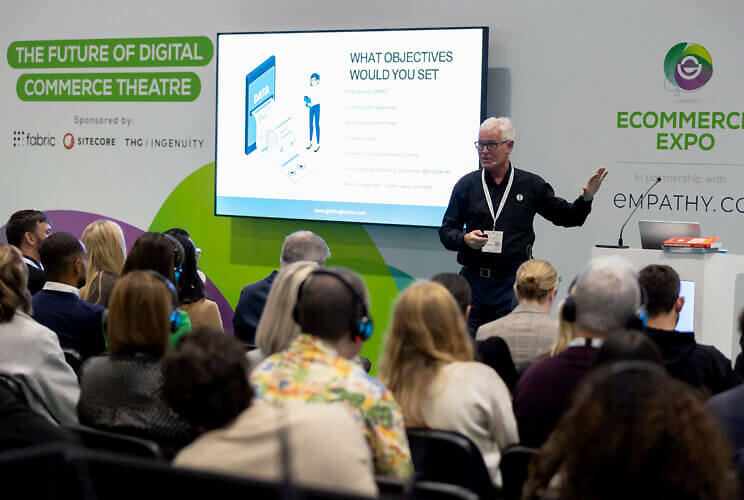
Gordon Glenister stands out as a leading influencer marketing speaker. With a wealth of experience, he has assisted numerous organizations in developing and refining their influencer marketing strategies. His expertise encompasses a broad spectrum of topics within the influencer marketing realm.
Gordon offers various speaking services, including:
• Keynote Speeches: Delivering 20 to 45-minute talks on diverse subjects related to influencer marketing.
• Virtual Workshops: Conducting one-hour sessions on the power of influencer marketing.
• Conference Hosting: Serving as a moderator for both online and in-person events.
• Podcast Hosting or Guest Appearances: Creating engaging podcast content as a host or guest.
His versatility and depth of knowledge make him a sought-after influencer marketing speaker for various events.
1. Define Your Objectives: Determine what you aim to achieve by hosting an influencer marketing speaker. This could range from educating your audience about influencer strategies to inspiring them to implement new marketing tactics.
2. Research Potential Speakers: Look for speakers with a proven track record in influencer marketing. Consider their experience, areas of expertise, and previous speaking engagements.
3. Review Content and Testimonials: Examine the speaker's past presentations, articles, or books. Testimonials can provide insight into their effectiveness and audience engagement.
4. Assess Alignment with Your Audience: Ensure the speaker's style and content resonate with your audience's interests and level of understanding.
5. Engage in Preliminary Discussions: Reach out to discuss your event's goals and gauge the speaker's enthusiasm and fit for your event.

Gordon has been a keynote speaker at numerous prestigious events in fact over 300, sharing his insights on influencer marketing and membership strategies. His engaging style and comprehensive knowledge make him a compelling choice for organizations seeking to deepen their understanding of influencer marketing.
Selecting the right influencer marketing speaker is crucial for the success of your event. Gordon Glenister's extensive experience and expertise make him a top choice for organizations aiming to explore the intricacies of influencer marketing. By following the steps outlined above, you can find a speaker who will provide valuable insights and inspire your audience to harness the power of influencer marketing.
For more information on Gordon Glenister's speaking services, visit his speaking page.
About the Author:
Gordon Glenister is an international expert on influencer marketing and membership. As 11 years at the helm of leading trade association, he has been instrumental in the setting up of the influencer channel of the Branded Content Marketing Association and also the Meetings and Events Support Association.


Is the Over-50s Market an Untapped Goldmine for Brands?
Is the over-50s an untapped market for brands? This vast audience represents a demographic with more than half the spending power in the UK population, yet it remains largely overlooked by marketing campaigns. While marketers often target younger age demographics like Millennials and Gen Z, older consumers—especially older women—are an ageing audience with immense potential. Marketing efforts focusing solely on age alone risk missing out on this high-value group.
1. Unparalleled Spending Power
Older consumers control more than half of global spending. In the UK, this age group is responsible for nearly 60% of all household expenditures. They’re not just spending on essential items—they’re splurging on new hobbies, luxury goods, health and wellness, and specific activities like travel. With more disposable income than younger generations, older demographics present a far more opportunity for brand owners looking to effectively market to a deeper level of consumers.
2. Loyalty and Brand Advocacy
Unlike young people, older generations tend to demonstrate enduring brand loyalty. When businesses understand consumers in this age range, they can enable brands to build meaningful relationships that last. Older people are not just customers; they become advocates for businesses they trust.
3. Growing Ageing Population
With people living longer and healthier lives, the ageing population continues to grow. By 2030, one in six individuals globally will be over the age of 60. In the UK, this demographic’s growth far outpaces other demographics, making it critical for marketers to take an active approach to reach this group.
Many brands risk alienating older audiences due to persistent ageist stereotypes. The belief that older consumers are a homogeneous group, resistant to technology, or uninterested in trends is outdated.
• Tech-savvy and Connected: Contrary to misconceptions, older people are highly engaged with technology. From using social media platforms to shopping online, they’re a digital-savvy audience. Instagram influencers like Lyn Slater (@iconaccidental) highlight how older generations embrace style and modern trends, making them ideal partners for fashion brands.
• Dynamic Lifestyles: Ageing audience members are taking up new hobbies, exploring wellness trends, and investing in specific activities that improve their quality of life. Marketing campaigns that target purely biological age overlook these broader interests.

1. Challenge Ageist Stereotypes
Effective campaigns represent older people as vibrant and diverse. Fashion brands, for instance, can better respond to this audience by designing clothes that combine comfort with high style. Brands like Dove and L'Oréal have excelled by using older models to promote beauty beyond just age.
2. Leverage Digital Platforms
Older demographics are an active audience online. Collaborating with influencers such as Helen Ruth Elam (@baddiewinkle) or Grece Ghanem (@greceghanem) can enable brands to market directly to this group. These influencers demonstrate how wealth, style, and individuality transcend traditional age ranges.
3. Tailor Solutions for Specific Needs
Older equivalent generations have unique preferences:
• Fashion brands should focus on relevant designs that meet comfort and practicality requirements.
• Tech companies must design user-friendly products with clear instructions.
• Travel businesses can attract older consumers by offering accessible accommodations and curated experiences.
4. Highlight Values and Experiences
This group values sustainability, ethical practices, and authenticity. By understanding attitudes and reflecting these values in advertising, marketers can resonate with older consumers. Experiential marketing, such as hosting workshops or events, helps brands connect on a deeper level.
5. Use Data for Personalization
To effectively market to older people, businesses must leverage data to understand this demographic better. Personalizing campaigns based on spending habits, preferences, and interests can yield better ROI.

Some brands have recognized the potential of this ageing audience:
• Nike: Their campaigns celebrate older athletes, proving physical activity transcends age.
• Peloton: By emphasizing low-impact workouts and community, they’ve captured the interest of older customers.
• Apple: Accessibility features and user-friendly designs make Apple’s products popular among older demographics.
The Risks of Ignoring the Over-50s
Ignoring older consumers is a risk brands can no longer afford. With more money to spend and an increasing presence across demographics, failing to address this audience can result in lost revenue and perpetuate ageist narratives.
Conclusion
It’s about time marketers took a more active approach to engage this audience. The over-50s market offers vast opportunities for brands to grow their customer base and improve their campaigns. By targeting specific activities, understanding attitudes, and leveraging data, brands can respond to the ageing population with relevant solutions. The question isn’t whether to target the over-50s; it’s how soon brands can start tapping into this lucrative market. As someone who is an influencer in this space I would be delighted to talk more on the subject and share my insights
About the Author:
Gordon Glenister is an international expert on influencer marketing and membership. As 11 years at the helm of leading trade association, he has been instrumental in the setting up of the influencer channel of the Branded Content Marketing Association and also the Meetings and Events Support Association.
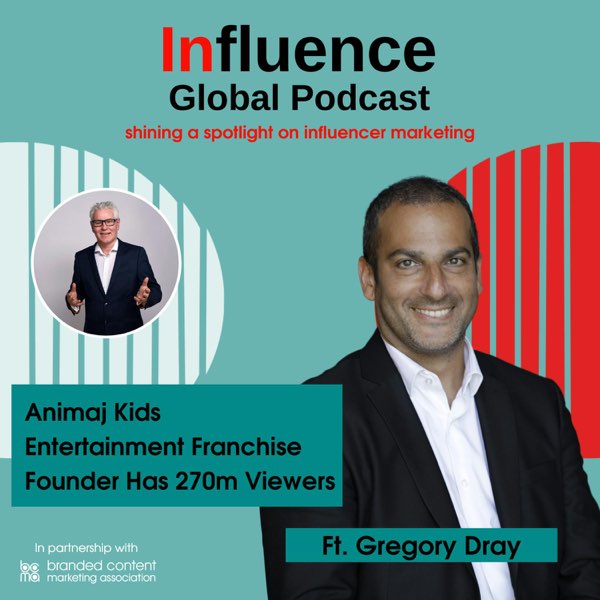
Gregory Dray is the Co-Founder of Animaj, a next-generation, digital-first media company that owns, manages and delivers engaging and premium brands to kids and families everywhere. Launched in May 2022, Animaj identifies the highest-quality independent IPs with solid awareness and engagement with kids that have yet to become global hits; buys and federates them; and uses a digital-first approach, leveraging data, technology, and distribution capabilities to transform them into multi-platform global franchises. From series and movies to L&M deals; location-based experiences to content distribution across 100+ platforms worldwide (incl. YouTube, Netflix, Prime Video, Disney+, Max, RAI, Clan, ABC Australia, Roku, Youku), the company’s brands live everywhere kids and families are, all at once.
To bring this vision to life, Animaj has so far raised €100 million, building a portfolio of 3 owned-and-operated IPs: the iconic and award-winning Pocoyo, leading digital-native brands Kidibli and HeyKids; as well as Rabbids, a partnership with Ubisoft Entertainment. Animaj’s lead investor is Left Lane Capital, a US-based, global venture capital and growth equity firm investing in high-growth internet and consumer technology companies that are fundamental to the lives of customers. With 20+ years of experience in the international media industry, Greg has built a remarkable track record of driving growth in global and rapidly evolving environments. He is recognized as an effective leader and operator, having successfully run both creative/content engines and business operations within major media/tech companies such as Google/YouTube, Lagardère Group, and Time Warner.
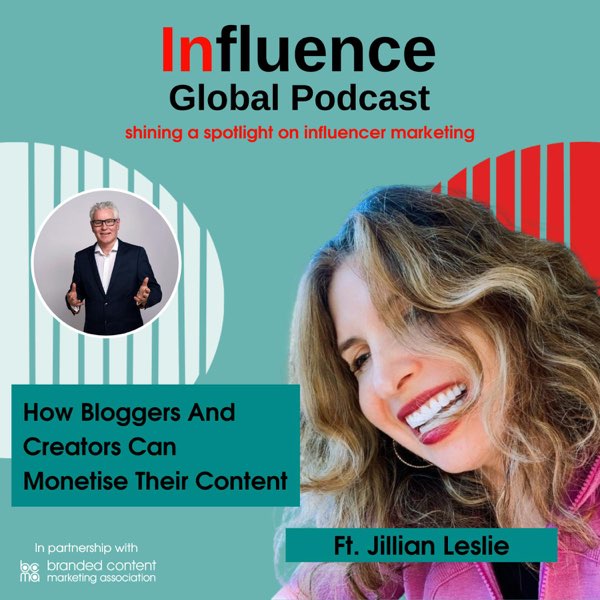
In this episode we talk with Jillian Leslie, an entrepreneur with a wealth of experience, having built multiple 7-figure online businesses and host of The Blogger Genius Podcast, which has close to 1 million downloads. She’s the co-founder of MiloTree, a software company that’s helps thousands of bloggers, creators, coaches, and entrepreneurs monetise through selling digital products. On her podcast, she regularly interviews industry experts and shares actionable strategies to build thriving online businesses. You can visit her at www.milotree.com
